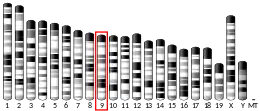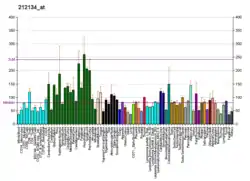| PHLDB1 | |||||||||||||||||||||||||||||||||||||||||||||||||||
|---|---|---|---|---|---|---|---|---|---|---|---|---|---|---|---|---|---|---|---|---|---|---|---|---|---|---|---|---|---|---|---|---|---|---|---|---|---|---|---|---|---|---|---|---|---|---|---|---|---|---|---|
| Identifiers | |||||||||||||||||||||||||||||||||||||||||||||||||||
| Aliases | PHLDB1, LL5A, pleckstrin homology like domain family B member 1 | ||||||||||||||||||||||||||||||||||||||||||||||||||
| External IDs | OMIM: 612834 MGI: 2143230 HomoloGene: 15903 GeneCards: PHLDB1 | ||||||||||||||||||||||||||||||||||||||||||||||||||
| |||||||||||||||||||||||||||||||||||||||||||||||||||
| |||||||||||||||||||||||||||||||||||||||||||||||||||
| |||||||||||||||||||||||||||||||||||||||||||||||||||
| |||||||||||||||||||||||||||||||||||||||||||||||||||
| Wikidata | |||||||||||||||||||||||||||||||||||||||||||||||||||
| |||||||||||||||||||||||||||||||||||||||||||||||||||
Pleckstrin homology-like domain family B member 1 is a protein that in humans is encoded by the PHLDB1 gene.[5][6]
The first PHLDB1 cDNA was cloned from a rat pituitary cDNA library and named as LL5 after the clone number.[7]
References
- 1 2 3 GRCh38: Ensembl release 89: ENSG00000019144 - Ensembl, May 2017
- 1 2 3 GRCm38: Ensembl release 89: ENSMUSG00000048537 - Ensembl, May 2017
- ↑ "Human PubMed Reference:". National Center for Biotechnology Information, U.S. National Library of Medicine.
- ↑ "Mouse PubMed Reference:". National Center for Biotechnology Information, U.S. National Library of Medicine.
- ↑ Katoh M, Katoh M (Oct 2003). "Identification and characterization of human LL5A gene and mouse Ll5a gene in silico". Int J Oncol. 23 (5): 1477–83. doi:10.3892/ijo.23.5.1477. PMID 14532993.
- ↑ "Entrez Gene: PHLDB1 pleckstrin homology-like domain, family B, member 1".
- ↑ Levi L, Hanukoglu I, Raikhinstein M, Kohen F, Koch Y (16 November 1993). "Cloning of LL5, a novel protein encoding cDNA from a rat pituitary library". Biochimica et Biophysica Acta (BBA) - Gene Structure and Expression. 1216 (2): 342–4. doi:10.1016/0167-4781(93)90171-9. PMID 8241284.
Further reading
- Nakajima D, Okazaki N, Yamakawa H, Kikuno R, Ohara O, Nagase T (June 2002). "Construction of expression-ready cDNA clones for KIAA genes: manual curation of 330 KIAA cDNA clones". DNA Res. 9 (3): 99–106. doi:10.1093/dnares/9.3.99. PMID 12168954.
- Ishikawa K, Nagase T, Suyama M, Miyajima N, Tanaka A, Kotani H, Nomura N, Ohara O (June 1998). "Prediction of the coding sequences of unidentified human genes. X. The complete sequences of 100 new cDNA clones from brain which can code for large proteins in vitro". DNA Res. 5 (3): 169–76. doi:10.1093/dnares/5.3.169. PMID 9734811.
- Dowler S, Currie RA, Campbell DG, Deak M, Kular G, Downes CP, Alessi DR (October 2000). "Identification of pleckstrin-homology-domain-containing proteins with novel phosphoinositide-binding specificities". Biochem. J. 351 (Pt 1): 19–31. doi:10.1042/0264-6021:3510019. PMC 1221362. PMID 11001876.
- Hotta A, Kawakatsu T, Nakatani T, Sato T, Matsui C, Sukezane T, Akagi T, Hamaji T, Grigoriev I, Akhmanova A, Takai Y, Mimori-Kiyosue Y (May 2010). "Laminin-based cell adhesion anchors microtubule plus ends to the epithelial cell basal cortex through LL5alpha/beta". J. Cell Biol. 189 (5): 901–17. doi:10.1083/jcb.200910095. PMC 2878951. PMID 20513769.
This article is issued from Wikipedia. The text is licensed under Creative Commons - Attribution - Sharealike. Additional terms may apply for the media files.




